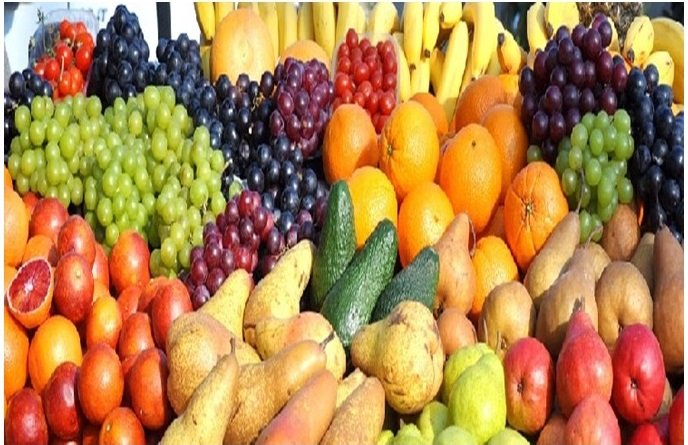Read in : தமிழ்
We eat fruits for their taste and the instant energy we get. We know that fruits are stacked with nutrients. We have our favourite fruits for their taste. But nature has endowed colours to the fruits, for a reason. It is as if nature has colour-coded fruits. The colour of the fruit signifies distinctive benefits and nutrients, for the plant as well as for us who eat those fruits. It is therefore advised that we eat a rainbow of fruits to get a variety of nutrients.
Colours in fruits and vegetables are due to phytonutrients, compounds that give plants their rich colors as well as their distinctive tastes and aromas. Phytonutrients strengthen a plant’s immune system. They protect the plant from threats in their natural environment such as disease and excessive sun. When humans eat plant foods, phytonutrients protect us from chronic diseases. Phytonutrients have potent anti-cancer and anti-heart disease effects.
Red-colored fruits such as strawberries, cranberries, raspberries, cherries, apples, watermelon and red grapes are found to contain the nutrient carotenoid lycopene, a potent scavenger of gene-damaging free radicals that seem to protect against prostate cancer as well as heart and lung disease. Green-colored fruits such as avocados, kiwi fruit and so on are rich in cancer-blocking chemicals like sulforaphane, isocyanate, and indoles, which inhibit the action of carcinogens (cancer-causing compounds).
Colours in fruits and vegetables are due to phytonutrients, compounds that give plants their rich colors as well as their distinctive tastes and aromas
Purple and blue fruits draw their color from the nutrient anthocyanin, an anti-oxidant. The anthocyanin may be beneficial for lowering risk for cancer and heart disease, while also lessening the painful effects of arthritis.
The anti-inflammatory orange-colored foods contain the nutrient beta-cryptoxanthin, beta-carotene and alpha-carotene. These nutrients in the orange-coloured fruits can be converted into vitamin A. The beta-carotenes in some orange fruits and veggies may play a role in reducing risk of lung, oesophagus and stomach cancers.
It’s beneficial and advisable to consume seasonal fruits. Seasonal fruits and vegetables have all the vitamins and nutrients that our body needs in that particular season. So, it is wise to eat the fruits and vegetables when it’s their season.

(Photo from Pixabay)
Seasonal fruits are affordable and since they are more abundant, you can stock them up. Seasonal fruits and vegetables that naturally ripen in the sun are fresher, taste better and have the highest amount of nutrition, antioxidants and phytonutrients. Eating seasonal fruits would mean consuming them soon after harvest. Produce loses its nutritional value the longer it is stored or sits while being transported. Usually, antioxidants like folate, Vitamin C, and carotenes rapidly decline when stored for a long periods of time.
Summer season fruits in India include mangoes, watermelon, papaya and blackberries. Rainy season fruits in India are custard apple, apple, jamun, peaches and bananas. Spring season fruits are cherry, jackfruit, pineapple, lychee and strawberry. Autumn season fruits are figs, plums, limes, pomegranate and passionfruit. Winter season fruits are dates, kiwi, oranges, grapes and chikoo.
Seasonal fruits and vegetables have all the vitamins and nutrients that our body needs in that particular season.
As the country’s economy develops, our eating habits too change. We are tempted to eat imported fruits and unseasonal fruits. The list is ever increasing. We are now familiar with kiwi , avocado, dragonfruit, blueberries etc. Even South African mangoes are sometimes seen during winter months in certain Indian markets. Imported fruits tend to have a downslide to our health.
Eating fruits at the right time also benefit the body. Fruit nutrient value is better absorbed during consumption in the day, rather than having it after a meal or during the meal.
Certain downsides of eating fruit skins along with the fruit are also to be noted. Apples are waxed to increase their saleability, appeal and also to increase their shelf life. Grapes are sprayed with excessive pesticide. In such cases, the skins need to be either properly washed or peeled, although some of fruit skins are beneficial if eaten along with the fruit. .
The trend of either adding pepper and salt or calorie-rich desserts to fruits undermines the beneficial effects of fruit consumption.
( The author has more than 25 years of experience in the food industry. He is passionate about agro-food processing and general well-being. )
Read in : தமிழ்











